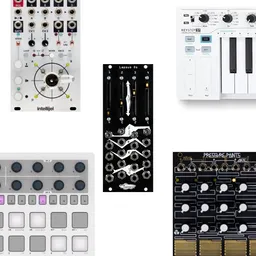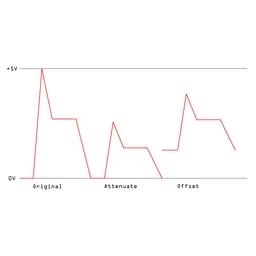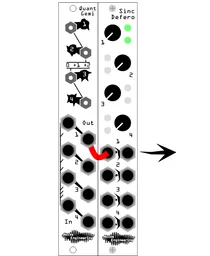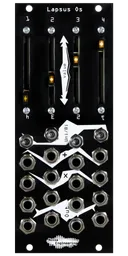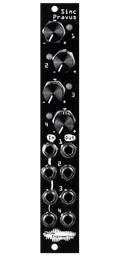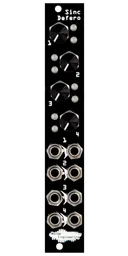Signal flow is talked about a lot in the audio realm, but it can make a big difference when routing CV, too. Today, we’ll be exploring a few best practices in utility placement and signal flow when modifying CV signals.
Attenuation and offset
Let’s start simple: a common task is attenuating and offsetting a CV signal. If you have a modulation signal, say an envelope, and you want to change its start and end levels, you’d need to attenuate it (to change the highest level) and offset it (to change the lowest level).
If you run your envelope generator into an attenuator then an offset, you’ll be able to dial in the low level with the offset control, and the high level with the attenuator.


As is often the case with modular, there’s not a wrong way to do things, but dialing in a patch becomes easier with some goal-oriented signal flow planning.
Quantization
Another interesting spot where CV signal flow becomes important to consider is any patch where a quantizer is used.
Let’s say we have an unquantized CV signal with a range of 0V to +5V. If we want to quantize its output, we’d patch the CV out of the sequencer into the input of the quantizer.
If we only need a range of, say, two octaves, we could make the sequence easier to use by attenuating the output range down from five octaves to two. To do this, we could patch an attenuator in between the sequencer and the quantizer:

If we were to put the attenuator after the quantizer, we would still constrain the range of the sequence, but the notes would be out of tune.
Let’s take this patch a step further by using a slew limiter to create glides between our notes. The slew limiter will need to be patched after the quantizer; patching it before the quantizer will remove the glide we’re trying to add.

If you want to modify your sequencer by mixing it with other voltage sources, the order matters there, too.
If you want to mix in another unquantized source – say, a DC offset for transposition control – and turn it into a tuned CV signal, you can use any CV mixer and patch it before the quantizer.

However, if you want to mix in another quantized CV source – perhaps mixing together two sequencers to create chord changes – you’re better off using a precision adder patched after the quantizer(s). Re-quantizing a quantized signal can sometimes lead to unreliable results.
If you want to add vibrato to a sequence using an LFO, you’ll also need a precision adder (and most likely an attenuator to constrain the voltage range of the LFO). An LFO is unquantized, but if we patch it into our signal chain before the quantizer, we’ll run into the same issue as using a slew limiter – the quantizer will remove the vibrato. By using a precision adder, we’ll keep our pitch CV in tune, and the LFO will slightly increase and decrease the note value as it oscillates.
